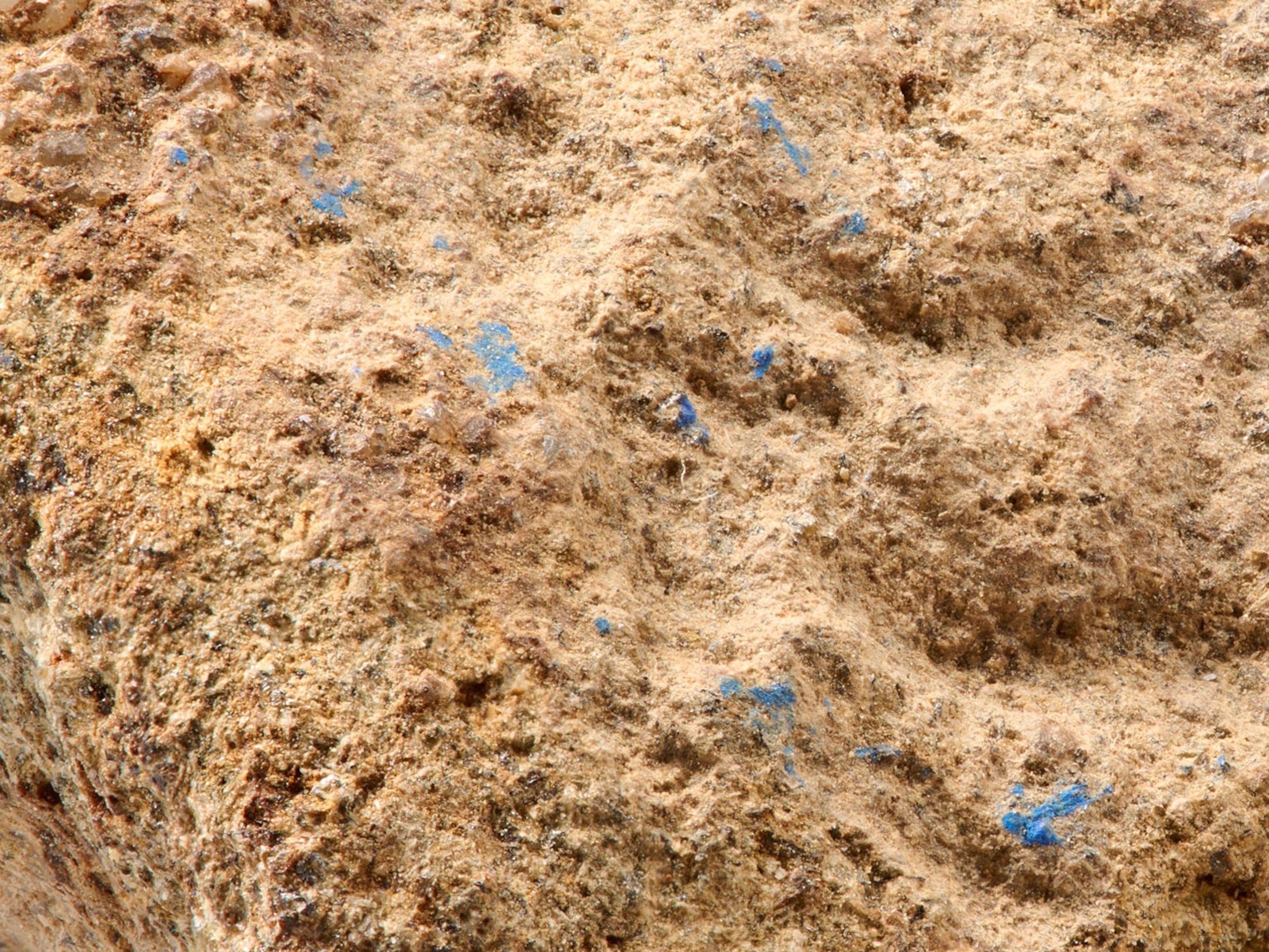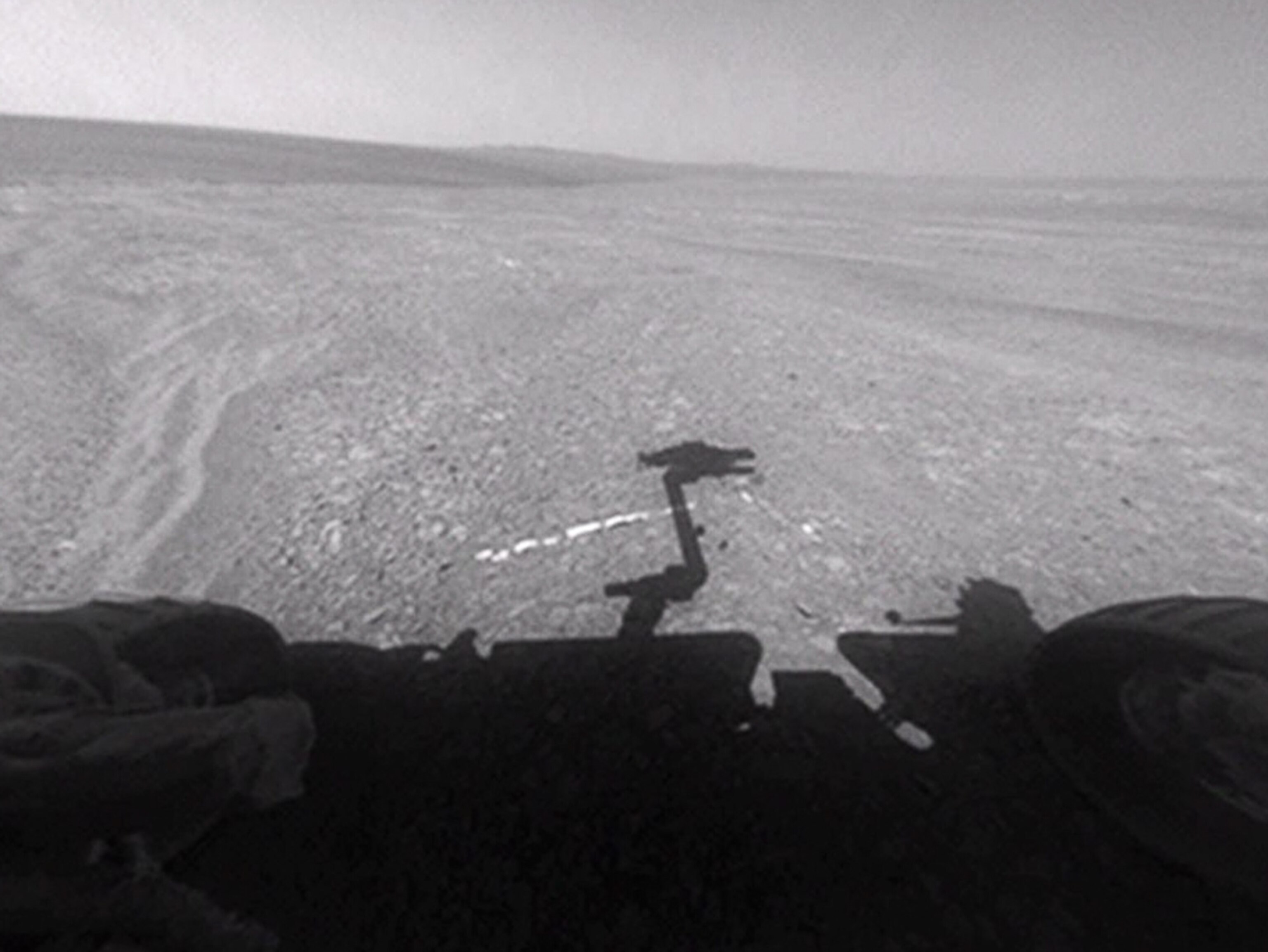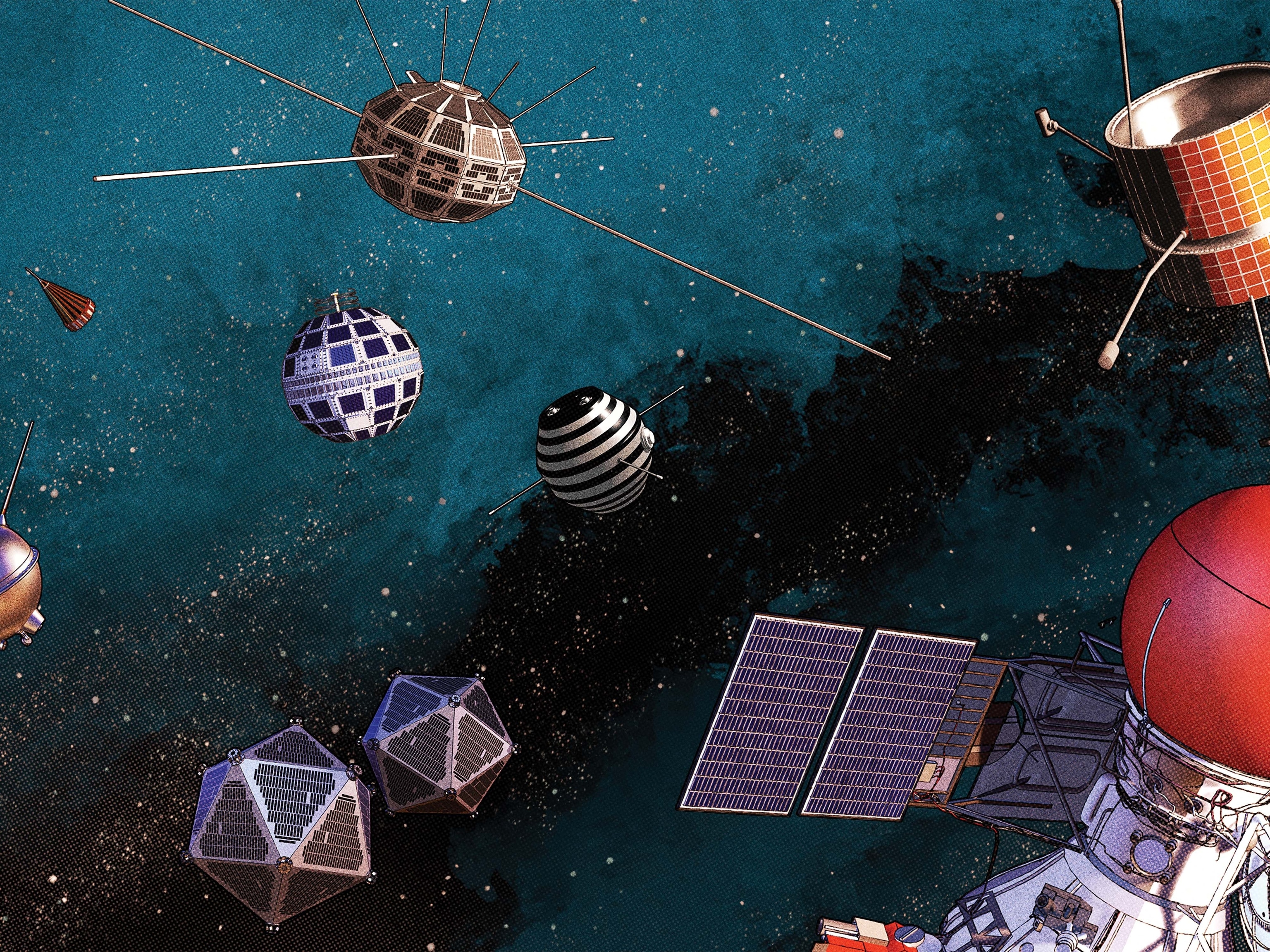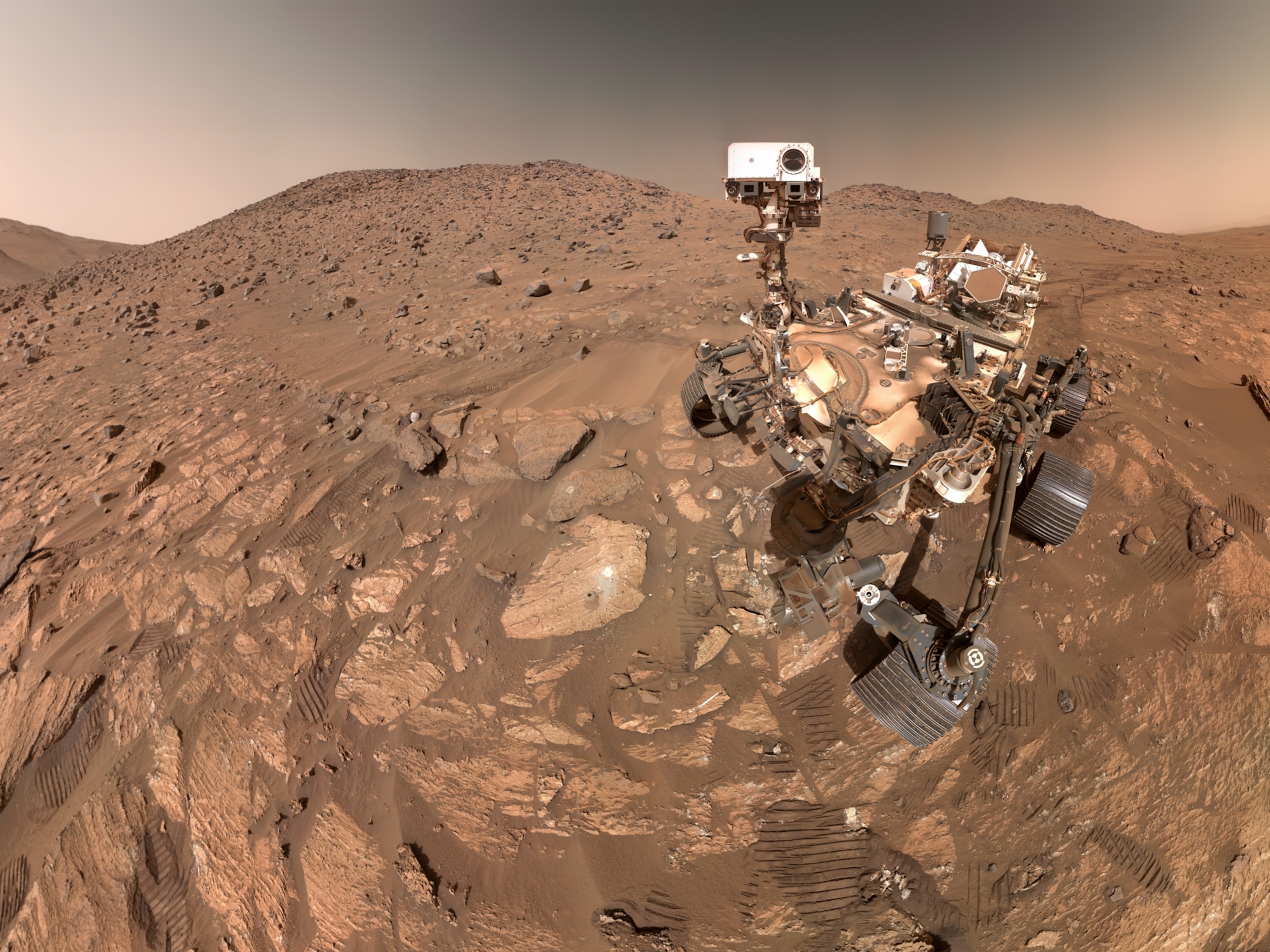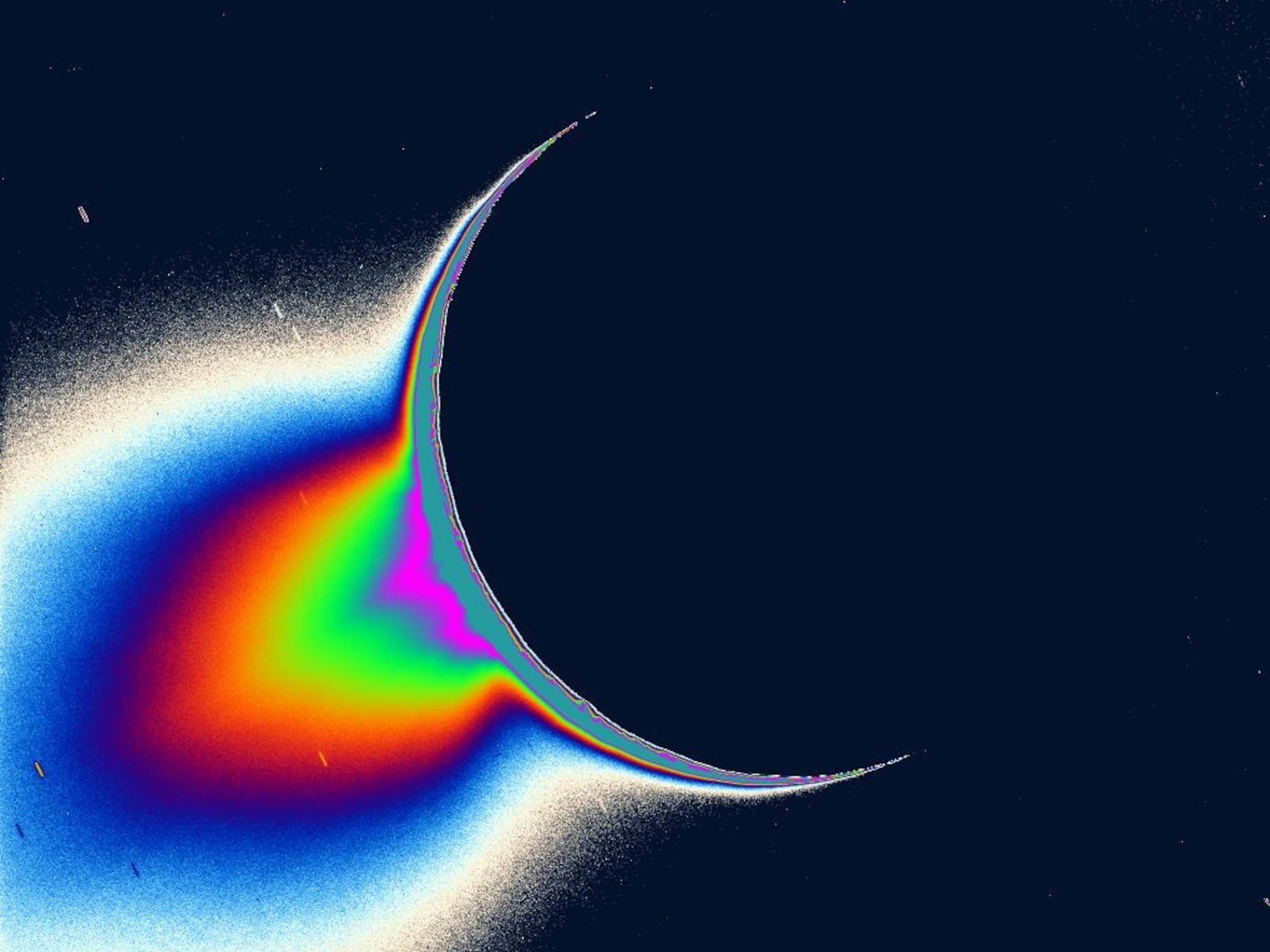
Mars Rover Finds Intriguing New Evidence of Water
Unexpected mineral finds prompt scientists to decide to drill.
The first drill sample ever collected on Mars will come from a rockbed shot through with unexpected veins of what appears to be the mineral gypsum.
Delighted members of the Curiosity science team announced Tuesday that the rover was now in a virtual "candy store" of scientific targets—the lowest point of Gale Crater, called Yellowknife Bay, is filled with many different materials that could have been created only in the presence of water. (Related: "Mars Has 'Oceans' of Water Inside?")
Project scientist John Grotzinger, of the California Institute of Technology in Pasadena, said during a press conference that the drill area has turned out "to be jackpot unit. Every place we drive exposes fractures and vein fills."
Mission scientists initially decided to visit the depression, a third of a mile from Curiosity's landing site, on a brief detour before heading to the large mountain at the middle of Gale Crater. But because of the richness of their recent finds, Grotzinger said it may be some months before they begin their trek to Mount Sharp.
The drilling, expected to start this month, will dig five holes about two inches (five centimeters) into bedrock the size of a throw rug and then feed the powder created to the rover's two chemistry labs for analysis.
The drill is the most complex device on the rover and is the last instrument to be used. Project manager Richard Cook, of NASA's Jet Propulsion Laboratory, said that operating it posed the biggest mechanical challenge since Curiosity's high-drama landing. (Watch video of Curiosity's "Seven Minutes of Terror.")
A Watery Past?
That now desiccated Mars once had a significant amount of surface water is now generally accepted, but every new discovery of when and where water was present is considered highly significant. The presence of surface water in its many possible forms—as a running stream, as a still lake, as ground water soaked into the Martian soil—all add to an increased possibility that the planet was once habitable. (Watch a video about searching for life on Mars.)
And each piece of evidence supporting the presence of water brings the Curiosity mission closer to its formal goal—which is to determine whether Mars was once capable of supporting life.
Curiosity scientists have already concluded that a briskly moving river or stream once flowed near the Gale landing site.
The discovery of the mineral-filled veins within Yellowknife Bay rock fractures adds to the picture because those minerals can be deposited only in watery, underground conditions.
The Curiosity team has also examined Yellowknife Bay for sedimentary rocks with the rover's Mars Hand Lens Imager (MAHLI). Scientists have found sandstone with grains up to about the size of a peppercorn, including one shaped like a flower bud that appears to gleam. Other nearby rocks are siltstone, with grains finer than powdered sugar. These are quite different from the pebbles and conglomerate rocks found in the landing area, but all these rocks are evidence of a watery past. (Related: "A 2020 Rover Return to Mars?")
One of the primary reasons Curiosity scientists selected Gale Crater as a landing site was because satellite images indicated that water-formed minerals were present near the base of Mount Sharp. Grotzinger said that the minerals' presence so close to the landing site, and some five miles from the mountain, is both a surprise and an opportunity.
The current site in Yellowknife Bay is so promising, Grotzinger said, that he would have been "thrilled" to find similar formations at the mission's prime destination at the base of Mount Sharp. Now the mission can look forward to the surprises to come at the mountain base while already having struck gold.

